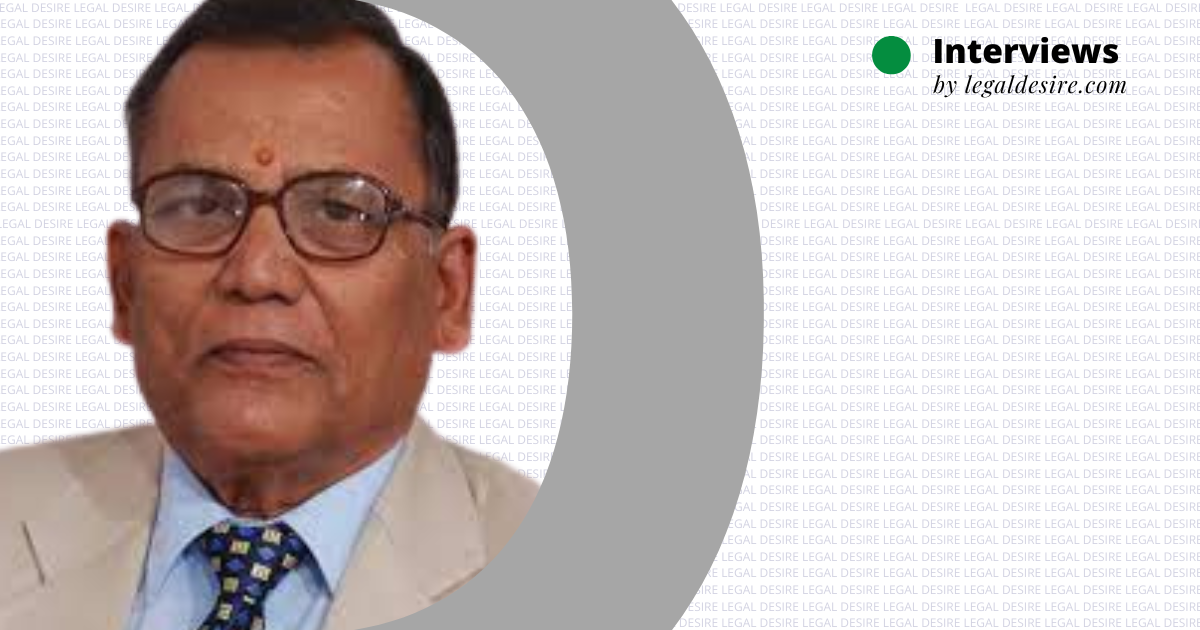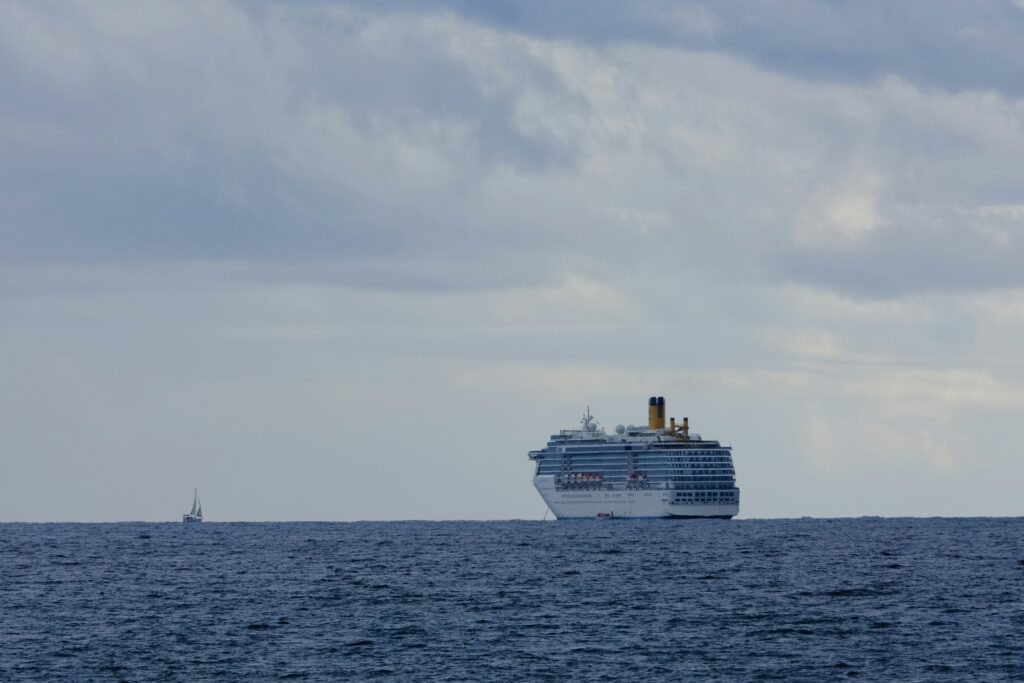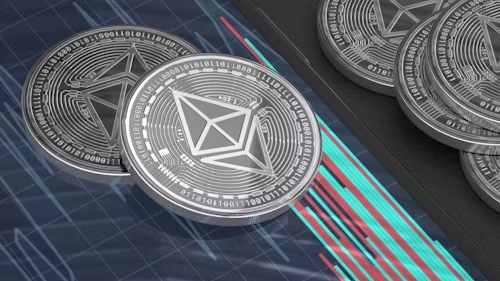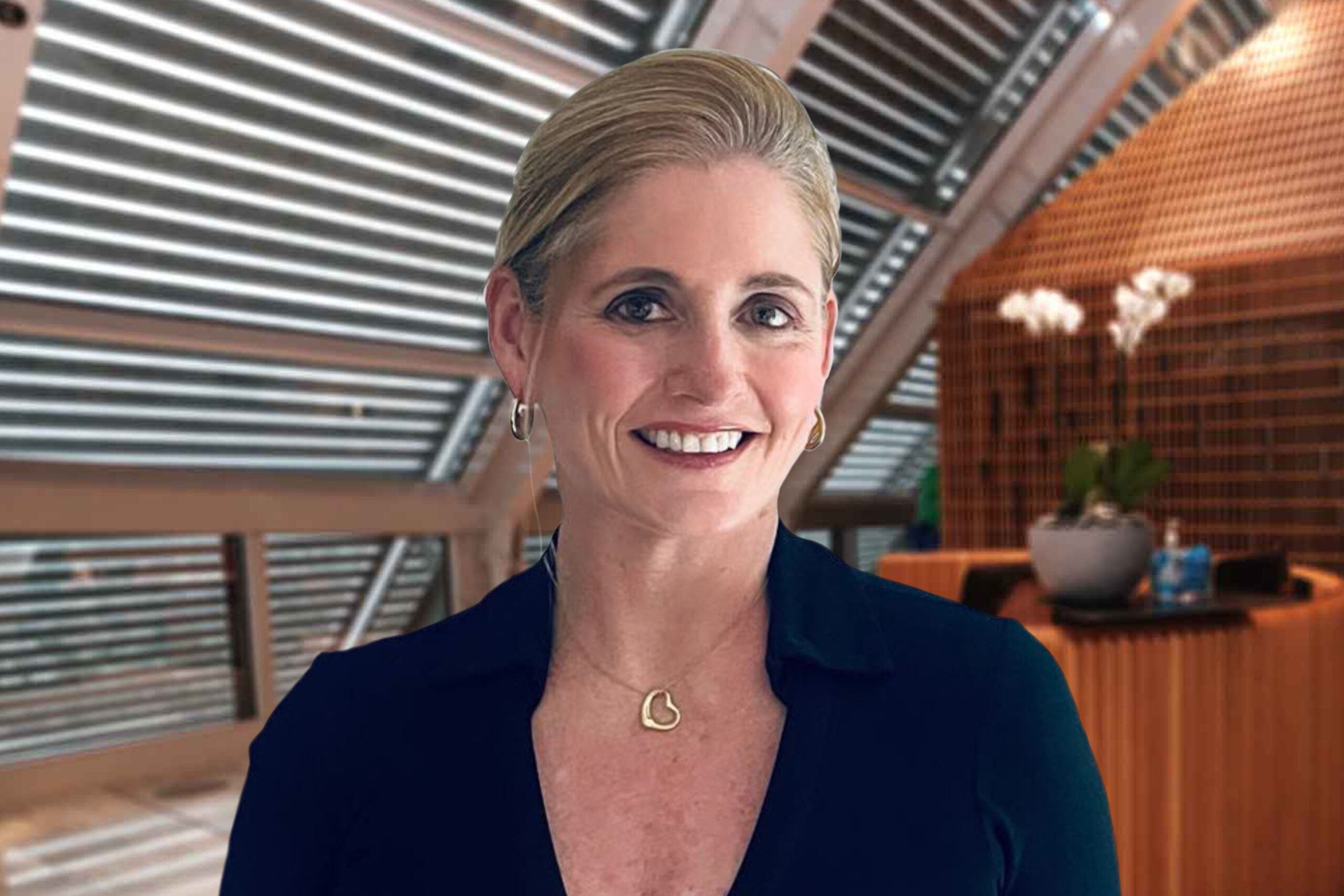Now Reading: In Conversation with Dr. T. R. Baggi, Former Director, Central Forensic Science Laboratory, Bureau of Police Research & Development, Govt. of India, Hyderabad
-
01
In Conversation with Dr. T. R. Baggi, Former Director, Central Forensic Science Laboratory, Bureau of Police Research & Development, Govt. of India, Hyderabad

In Conversation with Dr. T. R. Baggi, Former Director, Central Forensic Science Laboratory, Bureau of Police Research & Development, Govt. of India, Hyderabad
Dr. T. R. Baggi was born, brought up and educated in Hyderabad. He retired as Director, Central Forensic Science Laboratory, Bureau of Police Research & Development, Govt. of India, Hyderabad in 1995. After retirement he was consultant to AP Forensic Science Laboratory for about 3 years. In 1999 he joined OU Women’s College and helped Prof. Srinivas Mohan to start and establish M. Sc. (Analytical Chemistry) programme. In 2000 he was invited by OU to start and establish M. Sc. (Forensic science) programme. He developed the course as one of the best courses on Forensic Science in India. He was also instrumental in starting a Diploma programme in ‘Diploma in Criminology & Correctional Administration’ at Nizam College in 2006. After serving OU for about 14 years as Academic Coordinator for M.Sc. (Forensic Science) programme he has left the Dept. from this academic year to work free-lance. He is now conducting Capsule Courses & CME programmes all over India. He is an Advisor to RBVR Reddy College where Forensic science has been started at degree level from this academic year with tremendous response.
He is a Ph.D. in Applied Analytical Chemistry. He is a student of famous Chemistry Professors of yester years, Prof. J. N. Chatterjea (Coumarines) & Prof. R. N. Chakravarthy (Strychnine) both of whom were students of Nobel Laureate Prof. Sir Robertson of Oxford. Dr. Baggi is a Fellow and the past President of the Institution of Chemists (India). He has more than 60 years of experience in the areas of Applied Analytical Chemistry such as Pharmaceutical Analysis, Environmental Analysis Fuel Analysis, Forensic Chemical Analysis, Toxicological Analysis apart from Laboratory Management and Quality Management, He has about 100 research publications in reputed Indian and foreign journals. Prior to joining CFSL he has worked in the AP State Archives, Indian Institute of Chemical Technology, Indian Drugs and Pharmaceuticals. He has been awarded the prestigious President of India Police Medal for meritorious services, H. K. Sen Memorial Medal for Forensic Chemistry and Thaker award for the best research paper, Professional Acheivement Award and Man of the Year Award of American Biographical Institute, USA and Life Time Acheivement Award of Forensic Science Forum, Indian Science Congress. He has been recently conferred with ‘Jewel of India’ award and ‘Vijay Rattan Gold Medal’ for his outstanding achievements. He has also been honored with two other Lifetime Achievement Awards by Indian Society of Toxicology & Legal Desire Media and Insights. He has participated and chaired several sessions of International and National conferences, symposia, seminars etc. He has been honoured by several organizations in the city for his achievements.
He was associated with the investigations of several important cases such as 1974 Suryapet Hooch tragedy, 1993 serial Bombay blasts, Rajiv Gandhi Assassination, FSL blast, RSS Building blast in Chennai. His areas of expertise are fuel analysis, environmental analysis, pharmaceutical analysis, analysis of NDPS, explosives, toxicology, Quality Management and Laboratory management,
He has guided and still guiding Ph.D. research work. He has widely traveled including U.S.A and Canada. He was a Consultant (R&D), A.P. Forensic Science Laboratory. He is on the guest faculty of several Universities, academic and training institutions such as NPA, APPA, HCU, and Medical Colleges. He is an author for the forthcoming book ‘Essentials of Forensic Analytical Toxicology’ being published by CRC Press/ Taylor & Francis, USA. He has contributed a chapter on ‘Explosions and Explosion Injuries’ in a well-known book on Forensic Medicine edited by Prof. Deuskar of Nagpur. Now he has taken up to writing of books of academic interest. He also has contributed a chapter ‘Analytical applications Pyrene in Forensic Science’ in a book ’Pyrene Chemistry, Properties and Uses’ Ed. Charles R. Howe, Pub: Nova Science, USA.
He was the member of several important committees, UPSC and boards of Government of India. He has academic, technical and managerial capabilities. Though retired 29 years ago and now he is 86 years, he is still academically and professionally active. He is a polyglot. He knows Marathi, Kannada, Telugu, Hindi, Urdu, Persian, Sanskrit and German. He is a prolific writer. His articles appear in ‘The Hindu’, ’Times of India, “Tribune’ and ‘Deccan Herald’. He is an active member of INTACH and several social organizations in the city.
- What inspired you to join the Forensic domain during those early days? How do you feel about your decision to join the domain now?
From my childhood, due to the influence of my teachers and mentors I always wanted to pursue a career in science. Initially I desired to carry out my studies in zoology. However, after obtaining a degree with zoology (major), due to family issues I was forced to discontinue my education to seek employment. After working for a couple of years in odd jobs, I got a job of my liking as Archival Chemist in 1962. As the circumstances would have it, China war broke out and the post was abolished. Before I was retrenched, I entered RRL (now CSIR-IICT) as a JLA, in a much lower position, just to keep my interest in scientific career. At RRL I got very good mentorship and guidance. While working there I appeared for the Associateship examination of Institution of Chemists, Kolkata, which is recognized as equivalent to M. Sc. Degree in Chemistry, in 1965. Immediately after passing the examination, in April 1966, I joined Synthetic Drugs Plant of the Indian Drugs & Pharmaceuticals Ltd., which was the largest drug industry of that time. I set up the laboratories and worked there over nine years, gaining most valuable experience in conventional and instrumental methods of chemical analysis. Side by side, I carried out research work for which I was encouraged. In 1968 one of my mentors Dr. H. L. Bami left IDPL and joined as Director, CFSL (CBI) at Delhi. I helped him by collecting lot of literature on forensic science, which enhanced my interest in the subject. Right from my school /college days I was interested in detective novels and real crime stories. I read all the books of Sir Arthur Conon Doyle, Agatha Christie, Edgar Wallace, Earl Stanley Gardner and Peter Cheney, James Hadley Chase etc. I also read detective novels in Urdu, Hindi and Marathi such as Teerath Ram Ferozpuri, Ibne Safi, Surender Mohan Pathak Shirvalkar and others. In those days we had no TV and TV shows like CSI etc. Occasionally we could see English / Hindi mystery movies. All these influenced me to think how science can help solve crimes? As the luck would have it, while in IDPL I got an opportunity to investigate internally the death of some buffaloes with strychnine, a case of contamination of primaquine phosphate with potassium cyanide and a customs case of identification of Chloromycetin and p-amino salicylic acid. In 1974 just like God send, there appeared a UPSC advertisement for two posts of Asst. Directors (Chemistry) at CFSL, Hyderabad & Kolkota. Dr. K. C. Agarwal who was Asst. Director, CFSL, Hyderabad and who was leaving to join as Director, Gujarat State FSL strongly motivated and encouraged me to apply for the post. I sincerely prepared for the interview for almost nine months and to my surprise I did not get the call letter, as I came to know that they had called only those who were Ph. D. However, in the interview only one person was selected. UPSC decided to call persons who were non-Ph. Ds for a second round of interview for the second post. I received the call and attended the interview. I was selected for the post and ultimately joined CFSL, Hyderabad on July 24, 1975, fulfilling my dream. However, there was lot of disappointment, as the CFSL of that time was an apology for a forensic science laboratory in a small rented building, with no infrastructure and basic laboratory facilities. It looked like a match box when compared to the huge sophisticated laboratories of that time like RRL (IICT) and IDPL. Nevertheless, the spirit of never dying enthusiasm helped me to sustain and constantly fight for developing and modernizing the CFSL. Because of the support from my old contacts both at RRL (IICT) and IDPL, we could churn out good case work as well as some research work. Finally, the BPR & D and MHA rose to the occasion and agreed to sanction a modern new building for the CFSL. Thanks to my teacher Prof. T. Navaneeth Rao, Vice Chancellor of Osmania University, who was kind enough to give 20 acres of Osmania University land at Ramanthapur, Hyderabad, on a nominal rent of one Rupee per annum lease for 99 years. On this campus three institutions, CFSL, GEQD (merged with CFSL in 2012) and CDTS (now Central Detective Academy) were constructed and started functioning by 1982. Gradually, with constant representation perseverant approach and convincing persuasion, CFSL could develop as a full-fledged Forensic Science Laboratory of repute, with some basic infrastructure.
- As the key person who started the Master’s program in Forensic Science Osmania University, what inspired you to take this step when Forensic education was in infancy at the time?
After my superannuation in 1995 I was academically, professionally and passionately active in the field of Analytical Chemistry and Forensic Science. My friend, Dr. K. P. C. Gandhi, who was the Director of AP State Forensic Science Laboratory, invited me in 1997 to join his laboratory as an Honorary Consultant (R&D) in his laboratory, where I worked till June 1999.
In 1999 Prof. Srinivas Mohan of Osmania University Women’s College, Hyderabad invited me to help him set up and start the M. Sc. Analytical Chemistry programme. We established the course and I started teaching the first batch of students. The course is running full stream and going to celebrate its silver jubilee in 2024.
As a Director of CFSL, I was involved in the recruitment process of personnel through UPSC and SSC. Historically three universities (Sagar, Karnataka & Punjabi Universities) were running the Forensic Science courses in combination with criminology under UGC. Later Gujrat Forensic Science University at Gandhi Nagar was started which got upgraded later as Gujarat National Forensic Science University with four branches at Delhi, Goa, Pune and Gauhati. Most of the time forensic science laboratories, with few exceptions, were recruiting pure science students, who were given on the job training, to carry out the forensic work. Most of the recruitment rules did not include M. Sc. (Forensic Science) as a qualification. It was found that the those Universities which were running the Forensic Science courses could not keep abreast with the latest developments both in basic sciences and forensic science, as a result the forensic science candidates were not able to compete with basic sciences candidates who were preferred for the jobs. In the following decades several state and private universities started the Forensic Science courses, which faced the same stigma. As of now, I am told that there are about 70 Universities / colleges which are running UGC recognized undergraduate, graduate and post graduate programmes, on self-financing basis.
Having worked in IICT, IDPL and CFSL with lot of academic interest and activity myself and Dr. Gandhi at Hyderabad, wanted to start a M. Sc. Programme in Forensic Science, of international standard, which was strong both in basic sciences and advanced forensic science, though it could be little hard for the students. Nevertheless, I prepared a syllabus after studying various international syllabi which were sound both in basic sciences and latest advances in forensic sciences. The course had to therefore take help from pure science and applied science faculties apart from dedicated forensic science faculty. In the year 2000 with the efforts of Dr. Gandhi and Prof. P. S. N. Reddy, the then Head, Dept. of Chemistry, University College of Science, Osmania University, it was decided by Osmania University to start the M. Sc. (Forensic Science) programme. The then, Vice Chancellor of Osmania University, Prof. D. C. Reddy invited me to join the University as Academic Coordinator of the course. The Govt. of AP and Dr. Gandhi were magnanimous enough to allow the course to run in the AP State Forensic Laboratory till the arrangements for an independent building for Forensic Science Department is made in the campus. The course was inaugurated on July 27, 2000. The course was successfully run with the space, laboratory facilities and human resources of APSFSL till May 2002. Support of CFSL, AP State FSL, IICT and CCMB etc., was absolutely essential for running the course . Since I had excellent contacts, academic linkages and rapport with these institutions, the support was readily available.
Meanwhile, Osmania University identified a good existing, independent building with class rooms and laboratory space. Eventually the M. Sc. (Forensic Science) course started functioning in the OU campus building from the academic year 2002 – 2003. I was assisted by two Academic Consultants (teachers) Dr. Astha Pandey (who is now Associate Professor in Gujarat national Forensic Science University) and other floating individuals, Dr. Avinash Tope/ Mrs. Y. Jyotsana /late Miss. Sri Vidya / Mrs. P. Harika, Sri, Md, Yousuf Ali and several guest faculty from OU, APFSL, CFSL , IICT and CCMB.
In 2007 Dr. M. S. Rao, Director & CFS, Dept. of Forensic Science, MHA made an effort to harmonize all the syllabi of forensic science courses, in which the syllabus of Osmania University was adjudged as the best and other Universities were advised to revise their syllabi accordingly. To run a multidisciplinary course of this sort help and cooperation of several University Departments is most essential. Additional accommodation of a lecture hall and a laboratory was provided by OU in the adjoining building.
In 2012 two permanent posts of Asst. Professors were sanctioned in which my students Dr. T. Sowmyya and Dr. K. Rama were appointed, who are running the show now. I left the Forensic Science Unit, Osmania University in May 2014 for personal reasons.
In 2008 I organized and started an evening Diploma course in Criminology and Correctional Administration, under Sociology Department, Nizam College, Hyderabad.
Adding to my passion and enthusiasm to develop Forensic Science in this part of the country, we got excellent students, who could study hard, face challenges and strive for excellence. Every year number of students could qualify in the NET/ UGC/ CSIR Fellowship examinations. As positions in forensic laboratories were scarce, and the design of the course was multidisciplinary, many students could compete well and get jobs not only in FSLs but in other venues such as pharmaceutical industry, teaching, research, FCI and other chemical industries. Many of our students could go abroad for higher studies and they were responsible for raising our course to one of high standard. Usually students who have Master’s degree of Indian Universities have to pursue the Master’s programme again in Universities abroad. As per these regulations our students joined the Master’s programme. However, due to high knowledge level, Universities, condoning the rule promoted our students to Ph. D. programmes, which is a matter of pride for us. Many students competed in the civil services, banks, LIC, software industry etc., they were selected and have achieved high positions. Those students, who entered the research field in India and abroad obtyained Ph. D. degrees and have made excellent and noteworthy contributions to scientific fields. We have many such success stories of extraordinary performance to tell.
- You have seen the transition of the Forensics from under the control of BPR&D which was then transferred to DFSS. What were some of the effects of this transition on the development of Forensics in India?
Actually, the first CFSL was started at Kolkata in 1956 under Central Intelligence Bureau (CIB). Later in 1967 the Hyderabad CFSL was started in 1967 by CIB. In 1974 both the CFSLs came under the administrative control of newly formed organization, Bureau of Police Research & Development, under MHA, Govt. of India. Meanwhile another CFSL (CBI) was established at Delhi in 1967 under the administrative control of CBI. Around 1978, the old Punjab FSL, which was transferred to UT of Chandigarh, was taken over as CFSL (Chandigarh) by BPR&D. Thus BPR & D had three laboratories at Kolkata, Hyderabad & Chandigarh under its control, apart from three Govt. Examiners of Questioned Documents at Kolkata, Hyderabad and Shimla.
BPR & D was always headed by a senior IPS officer of DGP rank and another senior IPS officer of IG rank under him, designated as Director (R & D) used to be the controlling officer and head of the three CFSLs. The CFSLs were headed, technically, by a Laboratory Director. When the first CFSL was established in 1956, there used to be very heavy load of exhibit work from Central and State Governments. To manage the heavy work load one more CFSL was opened at Hyderabad in 1967. As a policy the MHA, in the meanwhile, had mooted the idea that all the states should have their own state FSLs, for which they provided logistic as well as financial support. As the state laboratories came up, the case work load in both the CFSLs dwindled considerably, by the time the BPR&D took over these two laboratories. However, the CFSLs (and GEsQD) continued to get some case work from UT’s, Central Departments like railways, postal, explosives, customs, revenue and income tax etc. Under these circumstances, BPR &D has to redefine the role of CFSLs at one point of time, under three heads; (a) Case work (b) Research & Development and (c) Training, briefly given as under:
- To examine cases received from UTs, Central Govt. organizations and States if any
- To update and improve the analytical methodology of examination of exhibits, in the light of modern developments in basic sciences, applied sciences and forensic science, in the country and abroad.
- To carry out research and development work in forensic science by the employees as well as research scholars appointed by BPR&D resulting into research publications and Ph.D. awards.
- To help the police organizations in developing efficient methods of crime scene investigation and provide field test kits and equipment.
- To train the state forensic science laboratory personnel in the modern and latest technological methods of forensic examination.
- To enlighten and train Judicial and police officers about the scientific methods of investigation and their impact on law enforcement and criminal justice administration.
- To organize lectures, seminars, workshops, symposia and conferences for Forensic Scientists, Judicial officers & Police Officers.
- To develop linkages with other forensic laboratories, Universities, scientific organizations in the country and abroad for collaborative work.
- To help the Government to formulate laws and procedures for law enforcement and criminal justice system.
Though the above policy was followed broadly and work carried out accordingly, with several constraints. The main constraints are briefed below:
- There was a severe bottleneck of lack of infrastructure. Most often the scientists had to outsource the work, be it for sophisticated instruments, special equipment or library etc. When compared to CSIR / ICMR/DRDO/ IARI etc., no such infrastructure or facilities were available,
- The CFSLs were understaffed, to fulfill the mandate given above. Both the lack of infrastructure and staff would bring frustration and lack of motivation.
- Frequent transfers of BPR&D officers at the helm of affairs of CFSLs frequently, shifted the priorities of case work / training / research.
- Some of the officers were not able to comprehend and understand the tremendous advances in forensic science and matching financial investments, and were not able to pursue and get the required infrastructure and human resource.
- Some of the officers were highly enthusiastic and did contribute to the growth of CFSLs.
- The rules and procedures of the bureaucratic setup were not congenial to the laboratories, which hampered the development and productivity.
The most important event in the history of CFSLs was visit of a senior defense scientist Dr. Ramachandran, around 1983, as a member of Expert Committee set up by the PMO to assess the requirements of CFSLs. After prolonged presentation by Dr. R. Y. P. Bhatia, the then Director, CFSL, and following discussions, Dr. Ramachandran was quite convinced of our moderate demands and kindly recommended to bring the CFSLs from non-plan to plan purview. The recommendation was immediately accepted and implemented. This decision changed the entire outlook and was responsible to develop the infrastructure and human resources of the laboratory in a big way.
Over a period of time, with ups and down based on the above constraints and views of policy planners, it was opined that the scientific organizations should be headed by scientists so that they can understand the technical issues in the right context and organize the working of CFSLs in an efficient manner, bringing fast development, on par with developed countries. As per these observations around 1992 the CFSLs were taken out of BPR&D and brought under a new Department of Forensic science under MHA, headed by a Director cum Chief Forensic Scientist.
The initial enthusiasm had to die soon as the Scientists who headed the DFS had worked under a system quite different from the research organizations and they lacked the vision, convincing capacity and leadership which is so important. The DFS works in a bureaucratic set up under a Joint Secretary, MHA, almost under the same conditions as when they were under BPR & D. Under BPR & D, the senior police officers, if convinced and determined, were able to successfully pursue the set objectives and goals, as they are well trained in organization and management. It should be understood that modern Forensic Science is technologically so advanced that it would be almost impossible to run a laboratory on shoe lace budgets and giving peanuts to their scientists. It should be understood that the academic and laboratory culture is so different from the bureaucratic culture. If DFS could have been brought under DST/ CSIR, perhaps we could have seen a change for better. In my opinion we don’t see desirable change in CFLs when removed from BPR&D and brought under the DFS, MHA.
- The CFSL Hyderabad was designated as Centre of Excellence for Forensic Chemical Sciences by the Ministry of Home Affairs during your regime. What changes did this bring to the laboratory? What advantages does the Centre of Excellence bring?
During nineties, the BPR&D gave Centre of Excellence status to CFSL Hyderabad in Chemical Sciences, as also to CFSL Kolkata in Biological Sciences and CFSL, Chandigarh in Physical Sciences. This allocation was based on the achievements of the laboratories and the scientists, in that particular field. At that point of time I modernized the laboratory by installing some sophisticated equipment. I replaced many obsolete methodologies with updated accredited techniques for examination of explosives, narcotic drugs & psychotropic substances and other chemistry oriented examinations. I undertook research work side by side with the help of my colleagues and two research students. We published number of research papers in reputed national and international journals and produced two Ph. Ds. I was able to develop linkages with several laboratories and Universities across India and abroad. During that period several training courses and seminars were organized in CFSL relating to the Forensic Chemistry subjects. I used to also participate in Seminars & Conferences across the country and give lectures. All these brought a good name to the laboratory and scientists across the country gave it as a referral laboratory and a place of knowledge base. These activities require, apart from your mandatory duties, extra efforts, time, enthusiasm, interest and motivation.
Unfortunately, gradually the status of ‘Centre of Excellence’ came down and the same were denotified. Once a status is given, that needs to be sustained, maintained and allowed to grow in stature. This is possible by continuing to grow the infrastructure, instrumentation, books, literature while recruiting scientists and research scholars of that discipline who have required zeal, enthusiasm and motivation. They should always be prepared to accept challenges in that field. It is a continuous and dynamic process. Any laboratory in the country facings problems should have confidence to look towards you to solve the problems, however difficult they might be, with the existing technologies in the laboratory or in outsourced facility.
- There might have been various instances, when you were called for inspecting the crimes scenes by the Police Units. How challenging was it to deal with it apart from the lab work while working in the Forensic Lab?
A successful forensic scientist should be able to visualize the events which have taken place at the scene of crime and reconstruct the same. He / she must be able to foresee what evidences could be found at the scene of crime? A forensic scientist when called by the police should readily agree to visit the scene and assist the police in collecting the evidence and reconstructing the crime. Every crime scene is unique. No two crime scenes are alike. Every crime scene has to be examined with lot of care, deep knowledge of the subject, logic and perseverance. Forensic Scientist does not visit every crime scene. The police are trained to handle routine cases. In some special cases like explosions, fires and other non-routine cases forensic scientist is called in. Keeping in view adverse circumstances, unfavorable weather conditions, expected attacks, adversaries trying to mislead or destroy evidence, the crime scene investigation should be carried out. Sometimes the forensic scientist has to use his convincing capability to carry out the investigation in a certain direction. In a particular case it took us almost a week to lift the entire explosion debris to sieve and sift for evidence. In one case we urgently needed a magnet to collect the small steel balls from scene of explosion (which were embedded in the IED). We located a nearby radio repair shop in the early hours, got it opened and used two speakers (which have magnets) to collect the steel balls. At another crime scene by smell we could recognize the poisonous vapor and advised the police to flush it down by water hose of a fire engine. Sometimes we have to work for urgent analysis in some other laboratory, for which we should be adept. As far as possible the forensic scientist has to go to the crime scene with several equipment and gadgets which might be required. In some cases you have to improvise and use whatever is available.
- After the laboratory tests at the Forensic Lab, you have been called in the court of law on many instances to testify about a particular case either from the Prosecutor/Defense side. What challenges were encountered by you while giving your opinion in the court? What were some of the misconceptions about the field in the court setting?
Under the Evidence act Section 293 a forensic scientist is normally exempted from court appearance as a witness and his report is accepted as evidence. However when defense lawyer insists and the court feels a forensic scientist can be called as an expert witness.
Expert witness has a different status when compared to a lay witness. A forensic scientist must be aware of mannerism and etiquette of the court. The expert witness is allowed to sit in a chair in the witness box. One must be decently dressed and should exhibit good manners. You should neither be very loud nor too low in tone while addressing the court. Though the questions may be asked by the defense lawyer, you have to address the answers to the court. As an expert witness we are allowed to explain things to court unlike lay witnesses. When the typed statement is finally given to you for checking one has to read and verify its correctness and any mistakes, have to be corrected only in pencil. Any documents or papers asked by the court are to be promptly given. Later the court clerk will give an official receipt for them.
Most of the time the prosecutors put forensic scientists on the witness stand as an expert witness. During the arguments defense lawyer may put several questions which have to be answered clearly and precisely. I had occasion to go to the various courts as expert witness. Initially the defense lawyers try to assess your knowledge, capability and weaknesses. On later occasions they do not ask so many questions when you establish yourselves as a competent expert witness.
Because of telephonic miscommunication between me and a public prosecutor, who did not mention the case / crime number, as I was just then dealing their another case, I appeared as expert witness with wrong case file. When the case started I was momentarily upset, but I controlled myself and calmly handled the situation with the presence of mind. When the clerk showed me my report from a distance and I was asked whether it was my report? With the pretext of verifying the report and my signature I took it and quickly glanced through it and returned the same to the clerk. In a flash I remembered the details of the case being discussed and could answer all the questions properly.
In many cases they would ask me why I did not use a particular method of analysis. In such cases I would answer that as an expert I thought that the method used by me was most appropriate for the particular case.
Many times they expect yes or no answers. I used to tell the matter has to be explained to clarify it. Some lawyers ask whether one has read a particular book. In that case we would say that on that subject many books are published and we have read more advanced books than that.
- Various high-profile cases have been handled by you during the course of the time. handled several sensitive cases such as Rajiv Gandhi assassination case, 1993 Bombay serial bomb blasts and Chennai RSS building blast. How different was that experience to deal with them than that of normal cases? Is there any kind of political pressure involved while dealing with the cases? How did you deal with all this?
The experience in sensitive cases is unique. In these cases one has to be alert and ready 24 X 7 with our team and equipment. In the laboratory we have a photographer and assistants who are well trained in scene of crime operations. They accompanied me in such cases. In highly sensitive cases many agencies such as state FSL, CBI, IB and local police etc., reach simultaneously. Generally, some senior police officer holds the command and directs and coordinates the operation after a meeting. As per laid down plan we guide the evidence collection. Once, the evidence is collected, if required emergency analysis is carried out in the nearest laboratory. The results of preliminary analysis are confirmed later. The preparedness, presence of mind and meticulousness is most important in such cases.
As a forensic scientist, one has to deal with all cases in similar manner methodically as per laid down principles. In so called sensitive cases, there may be some pressure to give the results / opinion urgently. Methods of evidence collection, transmittance to the laboratory and the analysis are all as per standardized protocols. In special cases we can give out of turn priority. No result can be given in hurry. The analytical process requires identification followed by confirmation and sometimes quantification.
Though one case certain threatening calls were received and certain persons were noticed around the laboratory but the matter was reported to local police who handled it appropriately.
In my time, hardly any political pressure was put on me for any case. Occasionally when some persons tried to influence, we curtly dealt with them with the help of security or police.
- Most of the professionals working at various Crime Labs across the world are overburdened by the casework. But you managed to indulge into research work and publish numerous abstracts, research & review papers & research projects in spite of all this. How did you make it possible? How important is it to indulge in the research work and collaboration with other persons in the field?
As mentioned earlier, the CFSL inflow of cases had considerably reduced because of the upcoming state laboratories. We had just enough case work to handle with the available staff. I had lot of interest in academics and research. I used to study a lot at home every day and on weekends. In between, without hampering work we used to carry out research work in piece meal and publish. With the allotment of two Research Fellows to me our research looked upwards and we could publish lot of research papers mostly in international journals. In a planned way research supervisor can guide the students every day for about an hour in lunch time, before or after office hours. Further carrying out research work was also mandatory for us as we were supposed to present papers at conferences held at different places in India. One has to have passion for research. He / she can find time and resources. We did not have many resources. We took help for instrumentation / library from other helpful organizations. In my view research in forensic laboratory should go hand in hand with case work It sharpens the mind to tackle difficult cases. In fact from some case work we publish papers. We receive cases which cannot be analyzed by standard procedures. In such cases we have to carry out research to solve the case. From this some new methods evolve which can be published. For career enhancement apart from the routine work the research work carried out by the individual is also taken into account.
You may be surprised to know that more than half of my publications are post retirement, when I joined Osmania University. After leaving Osmania University in 2014, I am giving lectures, Webinars, guiding research and publishing papers with my students. It is part of my life and a passion with me.
- How different is it to work in an academic setting to that of the lab setting?
In the routine analytical laboratory setting, generally we follow a cook book accredited procedure and give the result within a specified time frame. In exceptional cases we have to sometimes evolve new methods based on our knowledge and the facilities available. In most of the forensic set ups we hardly see the personnel using the library as a routine. Only those who are academic minded and research oriented refer the library or surf the net. Where the case work load is more, hardly there is any time to indulge in library reading. In some of the laboratories in the world the staff is rotated to do research for a fixed period of time taking them out of routine work.
Academic field is always way ahead of routine lab work. Always there is something to learn every day. We can keep our self, abreast of latest technology routinely. Academics sharpen the mind and give the enquiring faculty to the mind. It enables us to solve the problems and interpret the data. Therefore in a routine laboratory if anybody is struck with a problem he /she can take the help of an academician who can solve the problem to help.
- For your exemplary contribution to the Forensics field, you might have received various appreciation letters, awards & recognition. What are some of the notable ones?
I am proud but humbled to receive appreciations, awards and medals etc. Some of which I am giving below and others I have lost track.
- Fellowship of Royal Society of Chemistry (FRSC) London, April 2021
- President of India Police Medal for Meritorious Services, August 1995
- Fellow of Institution of Chemists (India), 1983
- Life Time Achievement Award for Forensic Science, ISC, Pune 2000
- Life Time Achievement Award for Forensic Toxicology, ITS, Cochin 2017
- Jewel of India Award, Indian Solidarity Council, Delhi, 2015
- Vijay Rattan Gold Medal , International Institute of Education & Management, Delhi, 2015
- N. Dutta Medal for Forensic Chemistry, Institution of Chemists, Kolkata, 1995
- Thakkar Award for Best Research paper , Institution of Chemists, Kolkata, 1995
- Citation in American Biographical Institute
- International Organization of Scientific Research Award for a paper 2013
- Having dealt with various cases and consulted many LEAs in your career, was there any moment when the work might have affected your personal life? What are some of the tips to balance the professional and personal life?
Right from my younger days I was used to have a very busy schedule devoted to lab work, reading and research. When I was at IDPL I was permitted to do research work after office hours. I used to leave home at 07:00 AM and come back home at 11:00 PM at least for a couple of years. After the general shift around 05:00 PM, I used to continue in B shift for my research work till 10:00PM. After joining CFSL I used to carry out my research work on weekends. I submitted my thesis to Patna University, under the guidance of an eminent professor, Prof. J. N. Chatterjea, who was the student of Prof. Sir Robert Robinson, a Nobel Laureate of Oxford. I took leave in spells and completed the attendance requirements of the University. I was awarded the Ph. D. degree in 1984.
I carefully planned the time management and managed the lab work, research, study, guidance and professional relationships. When in CFSL there used to be many official tours, which kept me away from home. In these academic and professional achievements, it is true that I could not give full attention to the family. Thanks to my wife and other family members who helped me. I am guilty of not looking after the education of my children well; nevertheless, they did moderately well and came up in life. However major responsibilities were fulfilled by me with the help of my wife. I tried to be with my family, parents and other relatives when essentially my presence was required.
I think an active person by proper planning and time management could perform multiple tasks and responsibilities by sharing or delegating the responsibilities. For this one should be considerate and helpful to others to expect their reciprocation.
- It has been noted that a Forensic Laboratory receives an enormous amount of case exhibits for examination, thus creating a backlog of cases. How did you address this issue while working as the Head of the Laboratory? What approaches are required to clear the existing backlog and ensure that backlog don’t occur which reduce the delay in the criminal trials?
As mentioned earlier, our case work load was not so much when compared to State FSLs. Occasionally we had some rush of cases. By proper planning, applying modern case management procedures, providing modern infrastructure and additional helping hands, and sometimes putting people on overtime on holidays we were able to tackle the situation. Generally the cases were cleared in one month. Urgent cases were dealt on priority basis.
In the forensic set up of the country, there is one faulty management, which keeps the flow of toxicological cases very high which results into pendency. As a rule the Forensic pathologist or autopsy surgeon who carries out the post mortem is supposed to use his/her discretion while sending viscera and other specimens for chemical examination to forensic science laboratory. While examination of the body, autopsy and other evidence recovered they should make an assessment and take a decision whether the viscera and other samples are to be sent for chemical examination. This practice is routinely followed abroad, where the cases of suspected poisoning are only sent to forensic laboratories. Here, in India every case like traffic accident, hanging, drowning, electrocution are sent to forensic laboratories for examination of poisoning, increasing the case work load tremendously. It may be noted that an analysis of general unknown poison, which is negative most of the time, takes more time and resources. As per a rough estimate hardly 20% cases are positive and the rest are negative. If initial screening based on pathological and preliminary examination is carried out and only such cases which are suspected of poisoning are sent to FSLs, there will be lot of reduction of inflow of cases. Indirectly, this will reduce the pendency. Further a detailed work study is done to assess requirement of staff and the infrastructure, and accordingly these are provided it will take care of the case work load optimally and reduce the pendency. In case pendency arises in other divisions it could be dealt accordingly.
- You were the founder member of the National Accreditation Board for Forensic Science Laboratories. What were your responsibilities in this role? How important is it for a Forensic Lab in India to get the NABL accreditation?
The accreditation activity in various fields in the country is guided and managed by Department of Science & Technology. In 90s it was thought to establish a National Accreditation Board for Forensic Science Laboratory. A committee of experts was set up and I was nominated as a Member. We had to work within the parameters of the guideline provided by DST.
Generally my role was to set standards for Chemical Sciences, toxicology and crime scene investigation. It had to be borne in mind that forensic analysis was not like any other applied analysis such as drugs & pharmaceuticals, food, beverages etc. The forensic samples received were not pure samples. They could be contaminated, adulterated, admixed, camouflaged, decomposed or putrefied. The quantity of the forensic samples varies from traces to bulk. The analytical methodology applied would depend on the nature of the sample and quantity received. It was impressed upon DST that for forensic work a single technique or methodology cannot be applied uniformly. However for routine samples the guidelines and specifications were drawn appropriate to Indian conditions, as all laboratories do not have the same infrastructure and same facilities. Therefore in the guidelines, minimum, desirable and ideal requirements were given. The desirable qualifications for the laboratory personnel were given. It was stressed that for routine cases harmonized procedures should be followed for analysis. In special cases deviations from prescribed procedures were allowed stating the valid reasons. NABL documentation is very important about which recommendations were given. Some part was devoted to standardization and calibration of equipment which is very vital. After several meetings and prolonged discussion finally the Guidelines were approved and published.
For giving accreditation a Committee of experts was formed every time, which would visit the laboratory and inspect everything minutely and ensure that all the prescribed parameters are met. Once the NABL accreditation is received, provision for periodical inspection and assessment was kept for continued quality assurance. CFSL, Hyderabad was the first NABL accredited laboratory in the country. However, most of the forensic laboratories in the country are not accredited for want of infrastructure, finances and human resource. As for as I know, it has not been made mandatory. If it is made mandatory, then the reports of non-accredited laboratories may not be accepted by the courts. If every laboratory is to be accredited the Government has to allocate huge funds in a recurring manner, which does not seem to materialize in near future.
To bring credibility and quality assurance in the forensic field accreditation should be mandatory. As of now each laboratory has its own procedures of analysis, which may have several deficiencies. In principle, the results reported should be reliable, reproducible, precise and accurate. The comparison of efficiencies of the laboratories can be carried out meaningfully, by ‘Proficiency Testing’ if every laboratory is NABL accredited. In the interest of justice the accreditation plays an important role.
- Having worked for more than 5 decades in the Forensics Domain, do you still wish to contribute to this domain? How?
I am passionate about the development of Forensic Science in India. To the extent feasible, with in the limitation I have contributed to it to the best of my knowledge and capacity. In my efforts most of my co-professionals, students, judicial officers, police officers and others have given me full support and cooperation. As I have seen Forensic Science from practicing and academic angle, I am entitled to express my feelings for the overall benefit of the interesting science. I have written several articles in newspapers like The Hindu, Times of India, Deccan Herald and Tribune etc., highlighting the issues affecting the growth of Forensic Science in the country. I foresee that India should demonstrate excellence in Forensic Science as in some other fields and should not look towards other nations for help, as we have seen in Sunanda Pushkar case. If proper facilities and infrastructure is given Indian Forensic scientists could become second to none. Though I am aging, with several geriatric problems, I am academically and professionally active to guide, advise, lecture, participate and write in the media to showcase Forensic Science in the proper perspective. In 2015 I organized and planned and started a B. Sc. (Forensic Science) course at RBVR Reddy College for Women, Hyderabad. Similarly I am helping Mallareddy, University, Hyderabad to run a B. Sc. (Hons.) Forensic Science course from the academic year (2020- 2021). I have been giving Webinars on Forensic topics to these colleges and several other Universities / Colleges across the country.










